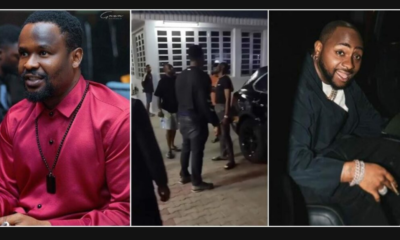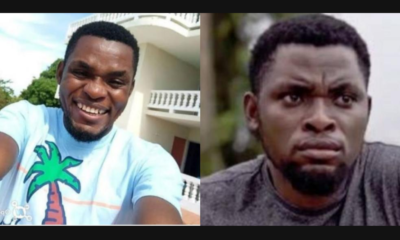History & Records
Read the full biography of an enslaved great Biafran, Olaudah Equiano
Olaudah Equiano, was a former enslaved African, seaman and merchant who wrote an autobiography depicting the horrors of slavery and lobbied Parliament for its abolition.
In his biography, he records he was born in what is now (EASTERN PATH , IGBO) Nigeria, kidnapped and sold into slavery as a child. He then endured the middle passage on a slave ship bound for the New World. After a short period of time in Barbados, Equiano was shipped to Virginia and put to work weeding grass and gathering stones.
In 1757, he was bought by a naval captain (Captain Pascal) for about £40, who named him Gustavas Vassa. Equiano was about 12 when he first arrived in England. For part of that time he stayed at Blackheath in London with the Guerin family (relatives of Pascal). It is here that Equiano learnt how to read and write and to do arithmetic. However, Equiano spent much of his time at sea, both on warships and trading vessels.
He served Pascal during naval campaigns in Canada and then in the Mediterranean. In 1763, Captain Pascal sold Equiano to Captain James Doran. He was taken to Montserrat and sold to the island’s leading merchant Robert King. During the next three years, by trading and saving hard, Equiano was able to save enough money to buy his freedom for £40.
He came to London before returning to sea, working as an able seaman, steward and, once, as acting captain. He travelled widely, including the Mediterranean, the Atlantic and the Arctic (in an attempt to reach the North Pole, under the command of John Phipps). Returning to London, he came into contact with the anti-slavery campaigner Granville Sharp when his friend, John Annis, was kidnapped by his former owner. Between them they tried to save Annis but were unsuccessful.
In 1775, he travelled to the Caribbean and became involved in setting up a new plantation colony on the coast of Central America. Equiano did everything to comfort and ‘render easy’ the condition of the enslaved people brought to work on the plantation. Equiano himself was badly mistreated. A slave trader named Hughes tried to enslave him and strung him up with ropes for several hours, but Equiano managed to escape in a canoe.
He returned to London and worked as a servant for a while, before finding employment with the Sierra Leone resettlement project, which was set up to provide a safe place for freed Slaves to live and work. He also formed the ‘Sons of Africa’, a group which campaigned for abolition through public speaking, letter writing and lobbying parliament. In 1788, Olaudah Equiano led a delegation to the House of Commons to support William Dolben’s bill to improve conditions on slave ships, by limiting the number of enslaved Africans that ships could carry.
Equiano knew that one of the most powerful arguments against slavery was his own life story. He published his autobiography in 1789: The Interesting Narrative of the Life of Olaudah Equiano. It became a bestseller and was translated into many languages.
The book began with a petition addressed to Parliament and ended with his antislavery letter to the Queen. The tens of thousands of people who read Equiano’s book, or heard him speak, started to see slavery through the eyes of a former enslaved African. It was a very important book that made a vital contribution to the abolitionists’ cause.
Equiano worked hard to promote the book. He went on lecture tours around Britain and Ireland and spent much of the 1790s campaigning against slavery. He was helped by abolitionist friends, such as Thomas Clarkson, who recommended his book and wrote letters of introduction. You can see one of the letters of introduction (written in 1789) in the source materials. He visited Birmingham in 1789 and Manchester, Nottingham, Sheffield and Cambridge in 1790. In 1791, he toured Ireland. Equiano spoke at a large number of public meetings, where he described the cruelty of the Slave Trade. The following letter was written by Equiano in 1792:
“Sir, I went to Ireland and was there eight and a half months and sold 1900 copies of my narrative. I came here on the 10th and I now mean to leave London in about 8 or 10 days and to take me a wife (one Miss Cullen) of Soham in Cambridgeshire. When I have given her about 8 or 10 days comfort, I mean directly to go to Scotland – and sell my 5th. Editions. I trust that my going has been of much use to the cause of Abolition of the accursed Slave Trade. A gentleman of the Committee, the Revd. Dr. Baker, has said that I am more use to the cause than half the people in the country – I wish to God, I could be so.”
In 1792, Equiano married Susan Cullen, from Ely, at Soham church. After his marriage, Equiano visited Scotland, Durham and Hull. In 1793, his travels took him to Bath and Devizes. These travels turned the public against the Slave Trade, raising awareness of the horrors of the trade, changing attitudes towards enslaved people and inspiring others to join the abolition campaign.
Equiano died in March 1797. The Slave Trade in Britain was not to end until nearly a decade later. It would be forty years before slavery itself was abolished in the British Colonies.
Follow us on social media:-

 Lifestyle1 day ago
Lifestyle1 day ago“God created you uniquely beautiful and you must not allow anybody to lure and break your virgin!ty until you marry” – Church advises, honours 20 girls for keeping their virgin!ty
-

 Celebrity Gossip & Gist1 day ago
Celebrity Gossip & Gist1 day ago”Davido is an angel, no matter what, he can’t stop helping people” – Zubby Micheal says as he praises singer (Video)
-

 Crime1 day ago
Crime1 day agoThree men arrested over brutal m8rder of 17-year-old girl in South Africa
-

 Celebrity Gossip & Gist1 day ago
Celebrity Gossip & Gist1 day ago“2024 was the hardest year of my life, I lost over $3.7 million (N5.7billion)” – Mark Angel (Video)







